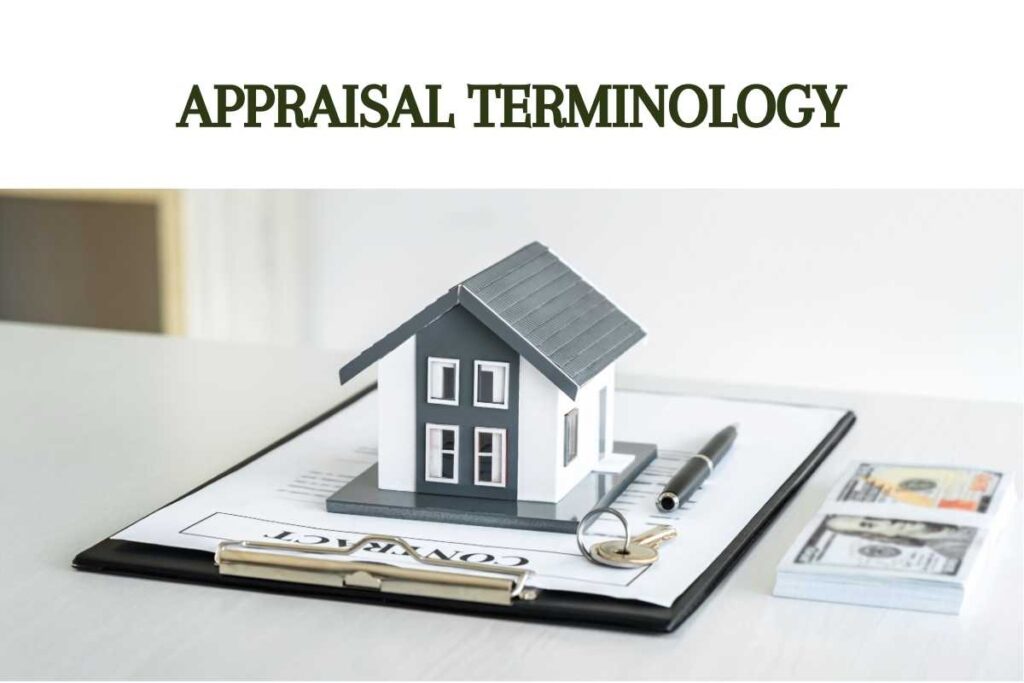Last updated on May 3rd, 2024 at 05:58 pm
When buying or selling a home, having an accurate appraisal report is an important (and usually required) step in the home buying process.
If you disagree with your results, it’s perfectly natural to want to challenge an appraisal that’s flat out wrong or has obvious errors.
But how do you do this successfully?
What are the chances of anything changing?
I’ll provide answers to these questions and more.
For now, let’s answer the first nagging question: Can you challenge an appraisal?
- Can You Challenge an Appraisal?
- Step 1: Understand the Appraisal Report
- Step 2: Identify Errors or Inaccuracies
- Step 3: Gather Supporting Documents
- Step 4: Prepare a Reconsideration of Value Letter
- Step 5: Engage an Independent Appraiser if Necessary
- Step 6: Submit the Dispute
- Step 7: Follow Up and Negotiate
- Final Thoughts On How To Challenge An Appraisal
- Frequently Asked Questions
- Additional Resources
Can You Challenge an Appraisal?
The answer is yes, you can challenge your appraisal by submitting what’s called a Reconsideration of Value.
This is a formal request submitted to the lender that asks the appraiser to reconsider their original determined value.
In addition to the formal request, the reconsideration of value will usually include things like other comparable sales to consider, errors found within the report, and any other additional information that may justify a revision to the original value.
I’ll walk you through the process of how to dispute your home appraisal in a way that’s both efficient and effective, and will give you the best chance at success.
A Quick Note
Before we get into the details, I’d like to preface this article with this:
No one is perfect.
Appraisers are human and make mistakes.
Keep this in mind as you begin thinking about how to format your request. Remember, it’s entirely possible that a mistake was made, or a data point overlooked unintentionally.
I like to believe this doesn’t happen often, as appraisers tend to be very analytical and detail-oriented, but the truth is that we, as humans, can and do make mistakes that have an unintended impact on others.
It’s entirely possible that the appraiser was using the best data they had available to them, and the value just isn’t what you expected.
Although low appraisals can be frustrating, there are situations that arise when a home is overpriced or when buyers are paying more than they probably should!
Don’t take it personally – the appraiser is working to make sure all parties are aware of what the market says the home is worth.
Disclaimer: Our articles are written by a Licensed or Certified Residential Appraiser. This information is meant for educational or informational purposes only, and does not support or indicate an opinion of value for your home or property, nor does it provide any type of value indication for a lender, attorney, realtor, or any other individual or entity.
Step 1: Understand the Appraisal Report
Before beginning your appraisal dispute, it’s worth familiarizing yourself with how the appraisal process works. Learn about what factors appraisers consider and what guidelines they must follow to meet the lender’s requirements.

In some cases, if you question something included in the report, it was only done so to meet a certain lender requirement, but wasn’t relied on to determine value.
This is why it’s important to read through the report carefully and try to understand how the appraiser came to their conclusion.
Know what comparable sales are, how we “rate” the condition and quality of the property, and familiarize yourself with what’s happening in your local market.
This information should all be explained and will help you build a stronger case when preparing your appraisal dispute.
Step 2: Identify Errors or Inaccuracies
Obtain a copy of the appraisal report and go section by section to look over the details and calculations. You may come across blatant errors, or possibly an amenity or feature of your home that was misrepresented or omitted.
I’ll provide a few insider tips on where to find the most important data, and what areas of the appraisal report should be consistent with one another for the report to be considered “credible” in the eyes of the lender.
Pro Tip: If the neighborhood section notes that home values are increasing, but the appraiser has used dated sales and didn’t account for this, that could be an issue to bring up.
If you’re questioning if something here is off, ask your realtor to look at some neighborhood trends and provide their opinion.
There are also online sources where you can research market trends in your area.
If you find something missing, be sure to mention it in your dispute.
You can also take your own measurements and make sure they match (or are very similar to) what was reported.
It’s important to mention that the appraiser has specific guidelines they must follow for including certain areas in the square footage. If you have a finished lower level, garage loft, or other space you think should be included, there may be a legitimate reason why it wasn’t.
(you’d be surprised how often we’re asked to consider sales already in the report!)
Check the sales comparison grid for consistency – Did the appraiser make adjustments for dissimilarities for each comparable sale, or did they miss one?
If you want to dig even deeper, take a drive by the comparables used.
You may notice an odd locational feature (like power lines in the yard or a busy street) that may have impacted the sale price, but were missed by the appraiser.
Verify information about the comparable sales in public records.
Most towns and cities have a real property database you can search. Make sure the information matches the report – you can check things like the sale price, square footage, year built, and lot size.
Read the comments on the addendum!
The appraiser should explain why they put more weight on certain comps and why others were given less consideration.
If you find significant adjustments for quality or condition, make sure a description is included that supports the adjustments made.
Check other attachments for accuracy.
Look over the floor plan or sketch, if included, and make sure it’s correct in terms of room counts and square footage.
Make sure any maps accurately reflect your location and that of the other sales used.
Obvious mistakes like this can reflect on the credibility of the report as a whole.

Make sure the photos of other sales show the correct property.
Appraisers are required (for most reports) to view the homes they are comparing yours to.
Sadly, I’ve reviewed other appraisals that have a photo included that’s completely different from the one described!
Verify credentials – Many lenders require the appraisers license to be attached to the report. Check your local state department or the national registry of appraisers and verify the appraisers license status and expiration date.
Mention any errors you find in your dispute letter, along with supporting documents (read on) or features of your home that you don’t feel were represented accurately.
Step 3: Gather Supporting Documents
Gather any documents or evidence that support your claim for a revised appraisal value.
This could include a list of recent home improvements, additional photos that support a misrepresented condition rating or finish, or a list of recent comparable sales you’d like them to consider.

If you’re unsure where to find data on recent home sales, some easily accessible resources include Zillow, Redfin, your local real estate agent, or your towns real property website.
Most townships have a database that can be searched by property type, sale date, etc.
If you’re working with a realtor, they should be willing to spend some time looking for additional sales that may support your claims.
The appraiser will be obligated to explain why any sales you provide were or were not used, so make sure they are comparable to your home.
Pro Tip: In addition to the address and sale date, include an explanation of WHY they are better than the comparables already in the report!
I’d caution against including properties that are still actively listed for sale in your dispute, as these will not be considered as “evidence” to support your claims.
Active listings reflect only what price a homeowner is asking, not what people are willing to pay.
Pending sales, or homes under contract, may lend support and you should provide these if available. If they are truly comparable, the appraiser may be willing to investigate further and add them for consideration.
Step 4: Prepare a Reconsideration of Value Letter
Craft a simple rebuttal letter summarizing the errors or inaccuracies you found in the appraisal report.
Give a brief explanation of why you feel the value is incorrect.

Pro Tip: I would strongly suggest not phrasing the letter in an accusatory tone – give the appraiser a chance to explain their findings and correct any mistakes. It’s important to maintain a professional and respectful attitude throughout this process!
(Your chances of being successful increase if you don’t come off as rude or aggressive)
This letter should simply be a polite request for the appraiser to reconsider their value based on the new information you have provided.
Remember, the goal is to provide additional context and evidence, not to attack or belittle the appraiser.
Do not request that a specific number or value be reached. This can be considered trying to influence the appraiser and is prohibited. Trying to persuade an appraiser based on value alone will not yield good results.
Make sure that your request is based on verifiable data or visuals that support your opinions.
Lastly, be sure to provide contact information for the appraiser, and let them know you’re willing to assist however possible.
They may have questions or require additional information before making a decision.
Step 5: Engage an Independent Appraiser if Necessary
One option to consider prior to submitting your request is hiring an independent appraiser to provide a second opinion. A second appraisal can provide a different perspective and potentially support your argument.
Make sure whoever you hire is certified or licensed and is familiar with your local area.
This will come at an additional cost, but it may be worth it if you feel strongly about the initial appraisal value.
Your real estate agent should also be willing to provide a CMA (Comparative Market Analysis) at no cost. Although this isn’t as in-depth as a full appraisal, it may provide useful information to support your case.
Step 6: Submit the Dispute
Contact your mortgage lender and advise them that you’d like to submit a reconsideration of value. They will inform you of how the process works and how to send them the necessary information.
Follow the proper channels for submitting your dispute, adhering to any specific guidelines or requirements they may have.
Step 7: Follow Up and Negotiate
If you haven’t gotten a response after a few days, follow up with the lender to ensure your dispute was submitted and is being reviewed.
Be prepared to provide any additional information the lender or appraiser may request. If several more days go by, be persistent and follow up again.
Remember, the mortgage lenders are the appraisers “client”; and like any business, the appraiser wants to keep their clients happy!
If you are persistent (but respectful) with the lender, the lender will be persistent with the appraiser in finding a resolution or at the very least in getting a response in a timely manner.
Final Thoughts On How To Challenge An Appraisal
I’ll conclude this by saying that no appraiser likes to receive these types of requests, as it’s an indication that we’ve missed something or didn’t do our job thoroughly.
That being said, advocating for an accurate and fair appraisal is not only important for the transaction at hand, it’s your right as a buyer or seller.
Don’t be afraid to stand up for yourself and your property’s worth, and use the steps outlined in this guide to help you through the process.
Sometimes, an appraisal that comes back low is a blessing in disguise.
An overvalued home could lead to potential financial issues down the road.
Remember, the end goal is a well-supported and accurate appraisal, even if that means it’s below the agreed upon sale price.
This is ultimately what benefits everyone involved and protects the interests of all parties, even if that means walking away from a deal.
Frequently Asked Questions
Additional Resources
*The information provided does not guarantee a result and is intended only as guidance for submitting the Reconsideration of Value in an effective way.

Kimberly has been a Certified Appraiser in New York since 2004. With a background in the mortgage industry and prior licensure as a real estate agent, she brings a valuable perspective to buyers, sellers, and other industry professionals. Aside from her professional role, she’s an entrepreneur, novice home flipper, and proud mom of three.
License No. 45000046311 | FHA Certified | Member GSAR/NYSAR | Approved Supervisory Appraiser




